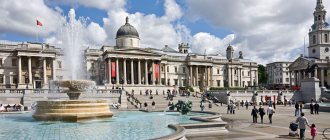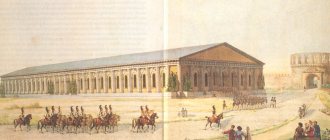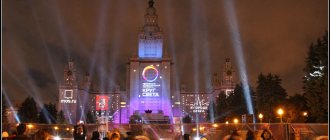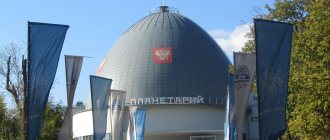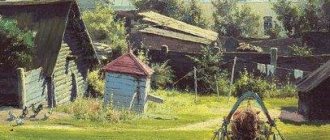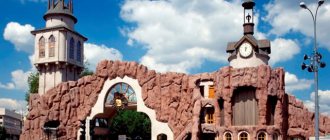Kozma Terentyevich Soldatenkov (1818-1901), entrepreneur, book publisher
Actions: built schools, hospitals, homes for the elderly, carried out extensive philanthropic activities in the field of culture and education, actively encouraged any book printing, patronized the arts. Being a passionate collector of valuable paintings, he sponsored the Rumyantsev Museum (to which he bequeathed all his paintings) and Moscow University. In his will, he ordered the allocation of more than 2 million rubles for the creation of a free hospital for the poor: “a hospital for everyone, without distinction of rank, class and religion” (now the famous Botkin Hospital).
Detail: in memory of his grandfather and grandmother, he ordered the issuance of benefits in the village of Prokunino. Until 1917, each girl who got married and each new recruit received 50 rubles. With this money, a village girl could arrange a wedding for 20 people and prepare a dowry, and the soldier’s family, in the absence of a breadwinner son, had the opportunity to repair a hut, buy a horse or cow.
When the manifesto on the abolition of serfdom was published, a rumor spread throughout the peasant country - in fact, the tsar did not sign anything, but simply the generous Soldatenkov bought out all the peasants and set them free.
local historian A. Mitrofanov
Dmitry Mikhailovich Golitsyn (1721-1793)
Prince Dmitry Mikhailovich Golitsyn, a Russian officer and diplomat, was one of the most famous philanthropists. He was among the first Russians who became interested in collecting paintings. During his trips to Europe, he managed to collect an amazing collection of 300 paintings, many of which were painted by famous masters such as P.P. Rubens, Raphael, Caravaggio and many other artists.
In memory of his wife (after her death in 1761), Dmitry Mikhailovich began organizing hospitals in Europe and Russia, donated money to support young doctors and medical students, as well as research in the field of medicine [3].
Golitsyn bequeathed 850 thousand rubles and his art gallery for the establishment and maintenance of the Golitsyn Hospital, which was opened in Moscow in 1802 as a “hospital for the poor.” Now this is the Golitsyn building of the First City Clinical Hospital.
Agrippina Aleksandrovna Abrikosova (1833-1901), wife of manufacturer A.I. Abrikosova
Actions: equipped several shelters for the homeless, opened a free kindergarten at her husband’s confectionery factory (now the Moscow factory named after Babaev), established the first “Free maternity hospital and gynecological hospital with permanent beds for Agrippina Alexandrovna Abrikosova in Moscow” (the maternity hospital was closed in 2012) , where the death rate during childbirth was less than one percent, an unheard of rate for that time.
Detail: Abrikosova gave birth to 22 children, the last at the age of 46 years.
Savva Ivanovich Mamontov (1841-1918)
S.I. Mamontov is a sculptor, singer, writer, successful industrialist who continued his father’s work and built railways; Savva Ivanovich is also the progenitor of Russian opera and painting.
He organized an informal association of artists in Moscow, gathering around him the best representatives of Russian painting, such as V.M. Vasnetsov, V.A. Serov, Polenov, Nesterov, Repin, M.A. Vrubel and many others. Savva Ivanovich helped people of art, relieving them of solving everyday issues, allowing them to completely devote themselves to creativity.
Savva Ivanovich created the first private opera in Russia in 1885. The idea was to promote on stage the works of Russian opera composers, who at that time were completely unrated not only abroad but also in Russia. Thus, the goal was to increase the popularity of Russian composers and singers.
But, unfortunately, in the 1890s, Savva Mamontov was ruined and arrested. Savva Ivanovich's property was almost completely sold out.
Gavrila Gavrilovich Solodovnikov (1826-1901), merchant of the first guild
Actions: at his expense a concert hall was built on Bolshaya Dmitrovka (now the Moscow Operetta Theater). He truly became famous after his death, becoming the author of the largest donation in Russian history. Having left behind a fortune of 20,977,700 rubles, the merchant bequeathed only 815 thousand to his relatives, and ordered the rest to be given to charity. A third of the capital went to the development of zemstvo women's schools, the other - to the creation of vocational schools and shelters for homeless children, the remaining - to the construction of houses with cheap apartments for poor people.
Detail: merchant Moscow did not like Gavrila Gavrilovich for his prudence and stinginess. The millionaire gave the most meager tips, for which the bath attendants nicknamed him Snore.
I asked him: “Well, where are you going to put your millions, old man? What will you do with them? And he told me: “When I die, Moscow will find out who Gavrila Gavrilovich Solodovnikov was! The whole empire will talk about me.
M. Lentovsky, entrepreneur
Bakhrushin Dynasty
Alexey Fedorovich Bakhrushin (1800-1848) – founder of the partnership of manufactories, manufacturer.
He actively invested funds, first of all, in medicine, culture and social construction of Moscow. At the end of each financial year, most of the profits were donated to charity.
The Bakhrushins first built the first building of the hospital for the chronically ill (1887), which was well equipped with equipment and technology. Then a second building was built for the terminally ill. A surgical building, a maternity ward and an outpatient clinic were built. About 1 million rubles were spent on all this.
The next thing that was built by the Bakhrushins was the Orphanage. There were 5 houses where 20-25 children lived. Moreover, the houses were predominantly inhabited not by people of the same age, but by children of different ages, so that the older ones could help and take care of the younger ones. In this orphanage, all boys received vocational education. For this purpose, an educational building with craft and plumbing workshops was built on the territory of the shelter. Later, a church was built on the territory of the shelter.
Alexei Fedorovich had three sons, whom he instructed “not to refuse help to anyone and not to wait for someone to turn to them, but to be the first to offer it to those in need. You knew the need with me, so know how to respect it in others.”
In 1895 eldest son Peter died. In memory of his soul, a House of free apartments was erected for young ladies who came to Moscow to receive higher education, and for poor widows with many children. More than 400 people lived there. Everything was free for children there: education, food, all levels of education, treatment, etc.
In 1900 The Bakhrushin brothers Alexander and Vasily were given the title of Honorary Hereditary Citizen of Moscow. 6 schools, 8 churches, 3 theaters, in total more than 100 buildings were built by the Bakhrushins. In addition, they constantly donated money to the People's Houses. Another example of the Bakhrushins’ charitable activities was in 1914. Vasily Fedorovich transferred absolutely all his capital to the needs of the front.
In the third generation, the Bakhrushins were glorified by Alexey Petrovich and Alexey Alexandrovich, who were both passionate collectors and left unsurpassed collections to their descendants.
The elder brother Alexey Petrovich (1853-1904) collected very valuable antiques, such as snuff boxes, miniatures, engravings, porcelain dishes, jewelry, books, jewelry and much more. He bequeathed every last thing to Moscow museums.
Alexey Alexandrovich (1865-1929), under the influence of his cousin, also became a collector. But he chose a rather original direction of collecting. Posters, program programs for performances, photographic portraits of actors, sketches of costumes, personal belongings of artists, their costumes - all this became Bakhrushin’s area of interest. He became the founder of the Moscow Literary and Theater Museum. This entire collection was donated to the Academy of Sciences.
Maria Fedorovna Morozova (1830-1911), wife of the “textile king” T.S. Morozova
Actions: allocated funds for the construction of two buildings of the Staro-Catherine Hospital; donated large sums of money to Moscow University and the Stroganov School; paid scholarships to poor students; built a real school in Vladimir (now the Pedagogical University), a rooming house on Presnya, a hostel for the sisters of mercy of the Marfo-Mariinsky Convent (B. Ordynka, 34), a labor exchange named after. T.S. Morozova (1st Dyakonovsky lane, 4),
Detail: she became the first merchant to be awarded the Mariinsky Badge of Distinction for 25 years of impeccable service in charitable institutions under the Department of Institutions of Empress Maria.
The Morozovs are the pride of the Russian cotton industry... From one peasant root four industrial dynasties, four businesses grew... Since the end of the 19th century, the main rivalry between eminent families has been about who will do more for the people
V. Ryabushinsky
Morozov Dynasty
Timofey Savvich (1823-1889) and his wife Maria Fedorovna (1830-1911) Morozovs
Timofey Savvich Morozov - manufacturing advisor, merchant.
It is from these people that the charitable activities of the Morozov family begin. Initially, it was associated with the improvement of the workers of their factories. Schools, colleges, hospitals, and dormitories for workers were built at each manufactory.
Accumulating their capital, these philanthropists willingly shared it with the poor and needy, donating large sums of money to many societies and institutions. With their help, for example, the largest and most famous psychiatric hospital in Moscow, Alekseevskaya, was built.
Maria Fedorovna was known for her charitable deeds both in secular society and in the religious world. After the death of her husband, she built an almshouse in his name in Orekhovo-Zuevo, depositing 500 thousand rubles into her account, with the interest from which the almshouse could exist. The philanthropist donated money to Moscow University, Moscow Technical School, and allocated money for scholarships and laboratories. With her funds, hospitals, buildings, labor exchanges in Moscow, and several houses for the poor were built.
Savva Timofeevich Morozov (1862-1905)
S.T. Morozov is a Russian philanthropist and philanthropist, the son of Timofey Savvich Morozov.
He was of great importance in the development of national culture. His greatest merit lies in helping the Moscow Art Theater. The establishment of the theater required significant funds. Having received no help from the government, Stanislavsky and Nemirovich-Danchenko began to turn to philanthropists. Morozov took on all the expenses of the theater himself.
Mikhail Abramovich (1870-1903) and Ivan Abramovich (1871-1921) Morozov made a significant contribution to charity, helping the development of medicine, culture, and science.
Nikolai Alexandrovich Alekseev (1852-1893), mayor of Moscow
Actions: On Alekseev’s initiative and using his personal funds, the first Moscow psychiatric hospital (known as the Kashchenko Hospital), more than 30 free primary schools for the poor, a music school, and two almshouses were built. He made donations to create hospitals for the wounded in the Russian-Turkish War.
Detail : being the mayor of the city, he refused his salary in favor of benefits for low-paid employees.
He needed 300,000 rubles. to a psychiatric hospital. “I’ll give them to you, head; “Just bow at my feet,” said the tyrant merchant, his father’s former clerk, to Alekseev. “If you please, I bow! - Alekseev answers - and bowed.
A. Amphitheaters
Peasant wedding. End of the 19th century.
Description:
Illustration: Portrait of K.T. Soldatenkov (etching, Rundaltsev)
=========
Soldatenkov Kozma Terentyevich (10[22].10.1818 - 19.05.[01.06].1901) - entrepreneur, publisher, bibliophile, collector, one of the largest Moscow philanthropists, merchant of the 1st guild, hereditary honorary citizen, academician of the St. Petersburg Academy of Arts. Commerce Advisor.
Born into an Old Believer merchant family, he did not receive a systematic education, spending most of his time (like his older brother Ivan) in his father’s shop, helping him with housework and practically studying the wisdom of the merchant business. At the age of twenty-one, Soldatenkov began to conduct business independently and, in addition to trading yarn, engaged in discounting and became a shareholder in a number of large commercial and industrial firms. He inherited his father's business in the 1850s. became one of the largest traders of cotton yarn in Russia.
In the early 1850s. Soldatenkov became close to the circle of Moscow Westerners led by T.N. Granovsky. In 1856 Soldatenkov, in partnership with Nikolai Mikhailovich Shchepkin, opened the Book Publishing Partnership of K. Soldatenkov and N. Shchepkin (the first book by A.V. Koltsov, published in February 1856), and in 1857 he opened a bookstore.
The publishing company did not pursue commercial goals: the partners published the works of advanced and little-known Russian writers and foreign authors. The first 12-volume collected works of V.G. Belinsky, as well as works by T.N. Granovsky, poems by N.A. Nekrasov, A.V. Koltsov, N.P. Ogarev, D.V. Grigorovich were published here , collections “Folk Russian Tales” and “Folk Russian Legends” by A.N. Afanasyev. Since 1895, on the initiative and under the editorship of M.P. Shchepkin, the “Library of Economists” was published (11 issues: works by A. Smith, D. Ricardo, J. Mill, D. Hume). All the books were well and expensively designed, and the cost was low, so the editions quickly sold out.
By 1862, the partnership between Shchepkin and Soldatenkov broke up, and Kozma Terentyevich continued his publishing activities alone, under sole ownership , maintaining the educational policy of the enterprise. He published the works of I.S. Turgenev (the first edition of “Fathers and Sons” was the first book published by Soldatenkov in 1862 under his sole company), poems by A.A. Fet, Y.P. Polonsky, S.Ya. Nadson , historical works of Vasily Klyuchevsky. Soldatenkov published more than 30 original works of Russian scientists. Scientists most often published their works at their own expense. He published many books by Russian historians, including the works of Klyuchevsky. He published “Essays on Primitive Economic Culture” by Sieber, “General History” by Weber (translated by Nikolai Chernyshevsky), “Roman History” by Mommsen, and “History of the Decline of the Roman Empire” by Gibbon. In addition, Soldatenkov published cheap textbooks and reading books for peasant children.
Soldatenkov’s house was visited by I.S. Aksakov, A.P. Chekhov, L.N. Tolstoy, I.E. Zabelin and others. At his estate near Moscow Kuntsevo (purchased from V.L. Naryshkin in 1865) dinners famous for their sophistication were held , noisy fireworks and balls. A number of researchers indicate that Turgenev used, satirically sharpening, some character traits and facts of Soldatenkov’s biography when creating the image of the merchant Kapiton Golushkin in the novel “Nov”. By 1901, Soldatenkov’s own home library consisted of about 20 thousand books in Russian (historical, philosophical, fiction, books on art).
Since the 1840s I became interested in collecting. The basis of his art collection was an art gallery. After purchasing K.P. Bryullov’s canvas “Bathsheba” (1852), Soldatenkov began collecting paintings exclusively by Russian artists. In the same year, during his first trip abroad, Soldatenkov met Russian artists in Rome. I purchased 7 sketches from A.A. Ivanov, including a sketch of the painting “The Appearance of Christ to the People.” When compiling the meeting, I used Ivanov’s advice. Soldatenkov’s collection included works by V.A. Tropinin (“Self-portrait against the backdrop of a window overlooking the Kremlin”), P.A. Fedotov (“Breakfast of an Aristocrat”), V.G. Perov (“Tea Party in Mytishchi, near Moscow”) , I.I. Levitan (“Spring is Big Water”) and others, hundreds of engravings and drawings, as well as sculptures by M.A. Chizhov, M.M. Antokolsky, N.A. Laveretsky, N.A. Ramazanov ( sculptural busts of A.S. Pushkin, N.V. Gogol, I.A. Krylov). The art collection also included several dozen works of Western European art - paintings and copies of ancient sculptures.
The Soldatenkov collection, which eventually became widely known in Moscow, began in the mid-1850s. was located in his house (Myasnitskaya Street, 37) and was available for viewing. This mansion, built in the 1770s and 80s, included chambers from the late 17th century. After the Patriotic War of 1812, it was rebuilt (architects O.I. Bove and A.G. Grigoriev) and received an empire look. Rebuilt for the second time, becoming the property of Soldatenkov. By his order, the architect A.I. Rezanov built an additional volume for the front vestibule, gave new decorative design to the facades, and changed the colonnade of the portico. In accordance with Soldatenkov’s desire to best accommodate his art collection, rooms with lavish decoration appeared in the mansion - “Pompeian”, “Byzantine”, “antique”, “Moorish”, “svetelka”.
Soldatenkov bequeathed his collection of Russian paintings, books on art (8 thousand volumes) and 15 thousand copies of magazines to the Rumyantsev Museum, where they were exhibited in two halls until the museum was liquidated in 1925; then transferred to the Tretyakov Gallery, the Russian Museum, etc., the books to the State Library named after V.I. Lenin (now the Russian State Library).
In Soldatenkov’s home chapel there were icons mainly of the Stroganov school. Signature icons of the 16th century were among the most valuable. - “The Burial of John the Evangelist” by master Nikifor Slavin and “The Sixth Week about the Blind” by master Istoma Savin. The pearl of the collection was “The Savior” by Andrei Rublev, acquired by Soldatenkov at the Savvino-Storozhevsky Monastery. Some of the icons were bequeathed to the Intercession Cathedral of the Rogozhsky cemetery, where K.T. Soldatenkov was buried.
After Soldatenkov's death, his publishing house lasted only two years. All unsold publications were donated by will to the city of Moscow. Also, according to the will, a city hospital in Moscow (named after S.P. Botkin) was built with Soldatenkov’s funds.
=================
More about the house of K.T. Soldatenkov on the street. Myasnitskaya, 37:
In 1926 at the address st. Myasnitskaya, 33, in apartment 2 lived Varvara Vasilievna Soldatenkova, a teacher of foreign languages (apparently, she was Soldatenkov’s great-niece). Then a sanatorium was set up in the estate, and during the Patriotic War the Headquarters of the Supreme Commander-in-Chief I.V. Stalin was located. Nowadays the building houses the reception room of the Minister of Defense.
©borch for fantlab.ru (based on network materials)
Literature:
— Tolstyakov A.P., Publisher K.T. Soldatenkov and Russian writers, in the collection: Book. Research and materials, c. 25, M., 1972;
- Belov S.V., Tolstyakov A.P., Russian publishers of the late XIX - early XX centuries, L., 1976;
— Tolstyakov A.P., People of thought and goodness. Russian publishers K.T. Soldatenkov and N.P. Polyakov, M., 1984;
- Bokhanov A.N., Collectors and patrons of art in Russia, M., 1989, p. 17-20.
— [Andreev A.], Art Gallery K.T. Soldatenkov, in the book: Picture Galleries of Europe, vol. 1, St. Petersburg, 1862; — Illustrated catalog of the art gallery of the Moscow Public and Rumyantsev Museums. Collection of K.T. Soldatenkova, M., 1901;
— Report of the Moscow Public and Rumyantsev Museums for 1901, M., 1902;
— Moscow Public and Rumyantsev Museums. Catalog of an art gallery bequeathed by honor. member museums of commerce advisor K.T. Soldatenkov, M., 1901; P.B.
— [Boborykin P.D.], Letters about Moscow. Letter three, “Bulletin of Europe”, 1881, No. 7;
Religious beliefs[ | ]
Soldatenkov took an active part in the life of the Moscow Belokrinitsky community. He financed a trip to London for the Old Believer Bishop of Kolomna Pafnuty (Ovchinnikov) and arranged his meetings with Nikolai Ogarev, Alexander Herzen, Vasily Kelsiev. At one time, he was inclined to accept Edinoverie, which was reported to Metropolitan Philaret (Drozdov) by the chairman of the Edinoverie St. Nicholas parish at the Rogozhskoe cemetery, V. A. Sapelkin.
In 1862 he welcomed the District Message compiled by Archbishop Anthony (Shutov) and Xenos (Kabanov).
In the Rogozhsky village, an almshouse was built at the expense of Soldatenkov.
In 1881, the government allowed the erection of a temporary altar in the Church of the Intercession at the Rogozhskoye cemetery. There was no time to build it, and Soldatenkov offered his camp church, which he ordered in France, as a temporary altar. Two years later she was returned to her owner's house[10][11].
Demidov dynasty
The Demidovs are Russian entrepreneurs and philanthropists.
The Demidovs spent very large sums of money on charity.
Nikita Akinfievich Demidov (1724-1789) provided great support to Moscow State University. This included assistance in construction, payment of benefits to young professors, scholarships to poor students, as well as the transfer of part of Nikita Akinfievich’s collection into the ownership of the university.
At the end of the 18th century. The first Orphanage appears in Moscow. At the origins of its creation was Prokofy Akinfievich Demidov (1710-1786), who donated more than 1 million rubles in silver.
